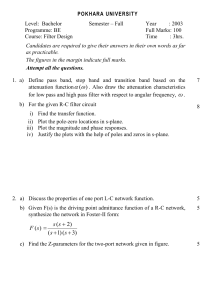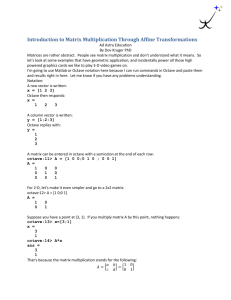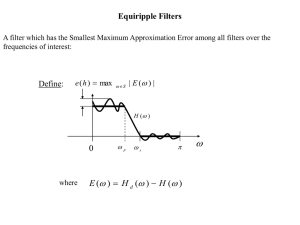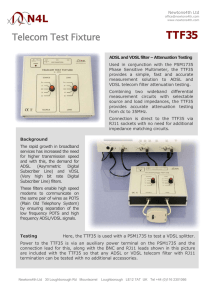Document
advertisement
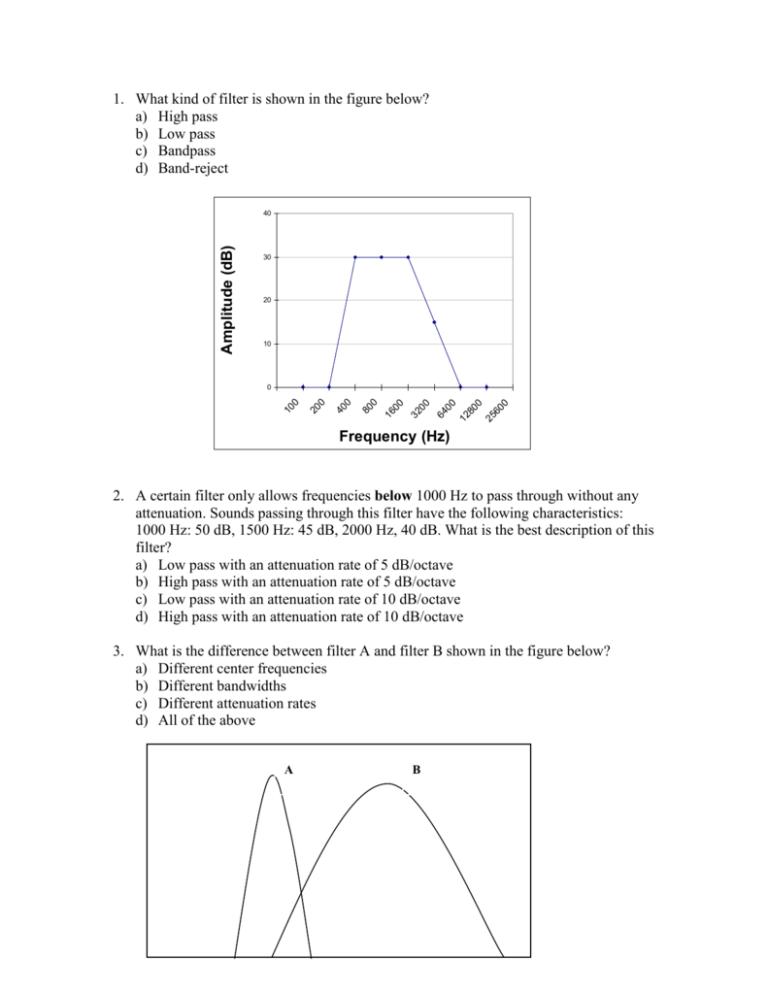
1. What kind of filter is shown in the figure below? a) High pass b) Low pass c) Bandpass d) Band-reject Amplitude (dB) 40 30 20 10 0 60 0 25 00 00 80 12 64 32 0 00 16 80 0 0 40 20 10 0 0 Frequency (Hz) 2. A certain filter only allows frequencies below 1000 Hz to pass through without any attenuation. Sounds passing through this filter have the following characteristics: 1000 Hz: 50 dB, 1500 Hz: 45 dB, 2000 Hz, 40 dB. What is the best description of this filter? a) Low pass with an attenuation rate of 5 dB/octave b) High pass with an attenuation rate of 5 dB/octave c) Low pass with an attenuation rate of 10 dB/octave d) High pass with an attenuation rate of 10 dB/octave 3. What is the difference between filter A and filter B shown in the figure below? a) Different center frequencies b) Different bandwidths c) Different attenuation rates d) All of the above A B 5 5 4 4 3 3 2 2 1 0 SYSTEM -1 -2 Amplitude Amplitude 4. What is the best description of the sound A after it has been filtered by the system? a) Distorted b) Undistorted 1 0 -1 -3 -2 -3 -4 -4 -5 -5 0 0.01 0.02 0.03 Time 0.04 0.05 0 0.01 0.02 0.03 0.04 0.05 Time 5. A certain filter allows only frequencies above 4000 Hz to pass through as they are. Sounds passing through this filter have the following characteristics: 4000 Hz: 80 dB, 2000 Hz: 50 dB, 1000 Hz, 20 dB. What is the best description of this filter? a) Low pass with an attenuation rate of 30 dB/octave b) Low pass with an attenuation rate of 60 dB/octave c) High pass with an attenuation rate of 30 dB/octave d) High pass with an attenuation rate of 60 dB/octave 6. For the same filter (question 5), what amplitude would a frequency of 500 Hz have at the output of the filter, assuming that the attenuation rate stays the same? a) -10 dB b) 0 dB c) -50 dB d) 20 dB ANSWERS BELOW: 1. 2. 3. 4. 5. 6. c) c) (Difference between 1000 and 2000 Hz outputs is 10 dB) Pay attention to the frequencies while picking out octave steps. d) b) (Only amplitude has been changed) c) a) (Output at 1000 Hz is 20 dB, so that at 500 Hz (one octave from 1000 Hz) will be 30 dB less than 20 dB)


